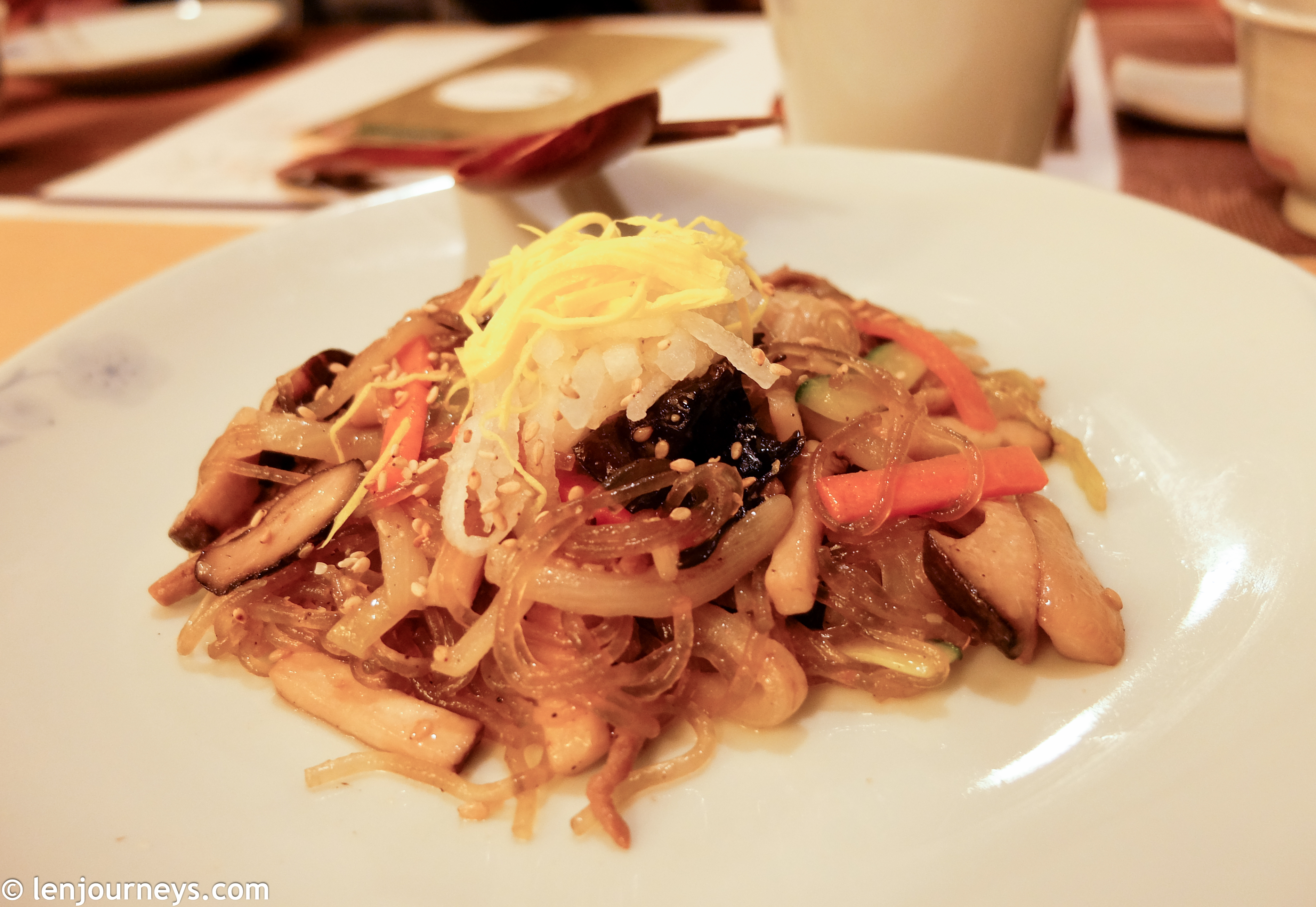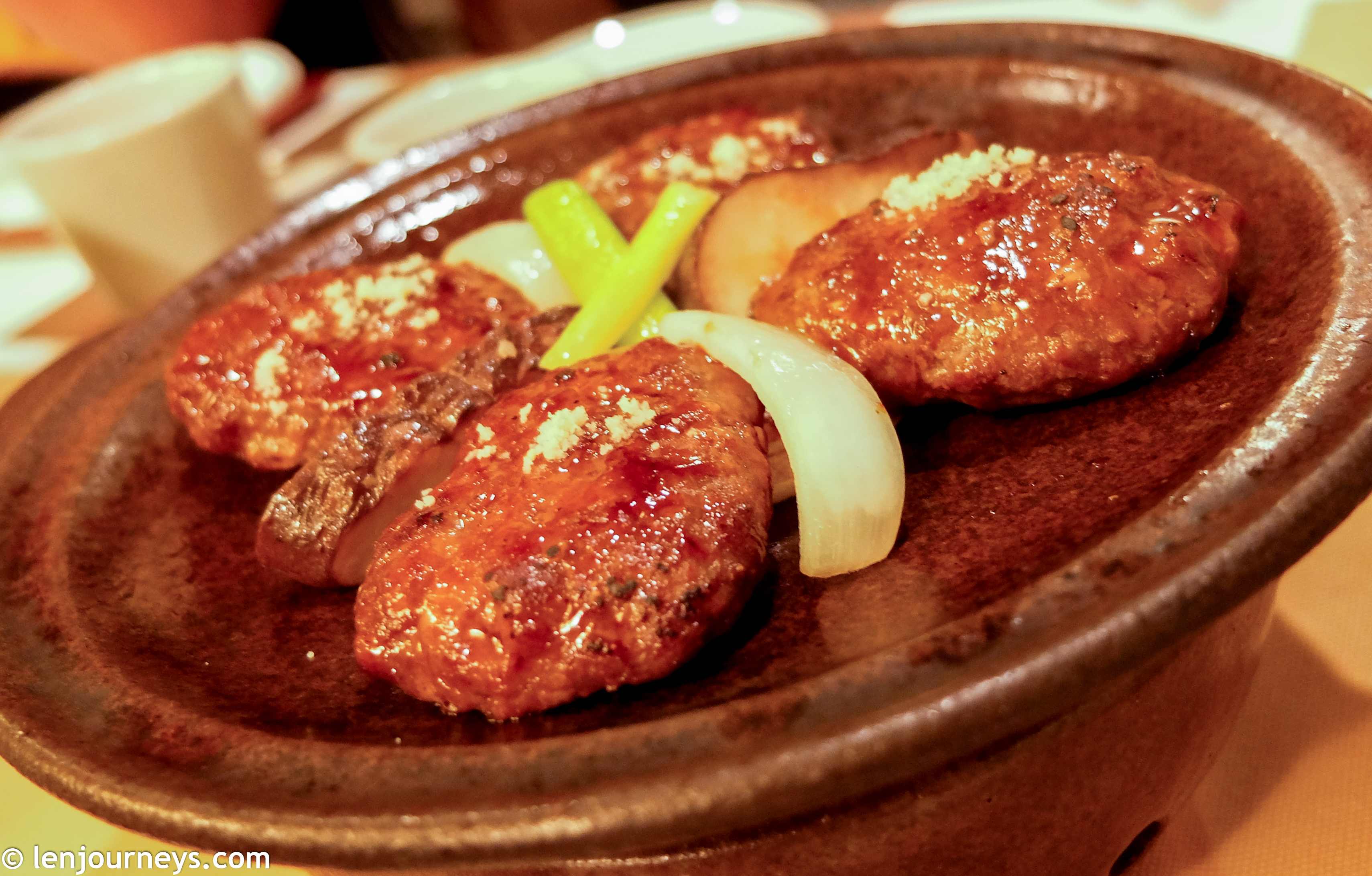Artful presentation and refined taste, Korean royal dishes demonstrate a centuries-long tradition of cooking that has been passed down by court cooks and royal descendants for generations. It’s the feast for all five senses and is often considered the highest form of dining in Korean cuisine.
After spending the day in Gyeongbokgung Palace, we decided to complete our royal experience at Jihwaja, the very first restaurant in South Korea that served court cuisine. Established in 1991, it’s the heritage of Royal Culinary Art Master Hwang Hye-song who dedicated her entire life to studying and introducing Korean royal dishes to the public. Though she passed away in 2006, her dream of promoting culinary tradition is carried on by her children.
What’s Korean royal cuisine?
Traditionally served at the court of the Joseon Dynasty (1392-1910), Korean royal cuisine reflects the lavish lifestyle of the past rulers of the Korean peninsula. Royals at this time could expect to eat up to five times each day, with all the meals elaborately prepared by court maids who were trained from early childhood. The day starts with a restorative porridge in the early morning; followed by the main breakfast at 10:00; a simple meal in the afternoon; a royal dinner table at around 17:00; and finally some small delights before bed.
As court cuisine was built around balance and harmony, five distinct cooking techniques should be demonstrated in each full-course meal, including frying, steaming, grilling, braising to slicing raw ingredients. Each meal should also consist of five different colors (blue, yellow, red, white, and green) representing the universe’s five elements. From meat, seafood, and vegetables to grains, all ingredients used in court cuisine are highly selective: only the best parts of the finest regional products are fit to be served to the royal family. Additionally, the food is carefully seasoned, and spices that have a strong taste or unpleasant odor are avoided to maintain the ingredients’ natural flavor. All these things reflect the sophisticated nature of a culinary tradition that has been preserved for over 600 years.
Jihwaja and the Food
From a 12-course meal that fits state leaders to à la carte menu, there are several options to choose from. However, as big fans of gogi-gui, we ended up with a menu that includes both Beef Rib and Tteok. Both are the 9-course set menus that focus on grilled meat.
Appetizers
The meal started with hobakjuk (호박죽), an autumnal soup made from steamed Japanese pumpkin. Simple in style, yet its taste is profound. Pumpkin seeds were also added, bringing texture to the dish. Served together with the soup is the watery kimchi. This was my first time trying this type of kimchi and I was surprised by its refreshing taste.

Special Delights
Next was the course’s special delights, which includes several pan-fried delicacies and chewy glass noodles with sautéed vegetables. They are followed by the meat dishes which are the highlight of the night. As expected from high-caliber chefs, the meat is grilled perfectly; it’s succulent and boasts a distinctive smokey, sweet flavor. To make the meal even more healthy for guests, finely julienned fresh ginseng was sprinkled on top of the vegetable salad.
Aside from these Korean royal dishes, we ordered the braised abalone in soy sauce. Although have tried abalone in Jeju, I would love to experience its royal version. And the chefs didn’t disappoint me, it’s remarkably fresh and sweet. Some dried jujubes are also included to enhance the sweetness of the abalone.





3. Main Course
At this point, our stomachs were nearly full. But Mr. Han – the eldest son of Master Hwang and the restaurant’s director – said that the main course hasn’t been served yet. We have experienced parts of a banquet, and guests are expected to eat that much.
In comparison to the previous dishes, the main course is more subtle, consisting of rice, stew, assorted vegetable, and a simple dish such as grilled fish. It resembles a daily meal of the Korean people, the quality, however, remains high.


4. Desserts
The sumptuous dinner end with yakwa (약과), a light flavourful pastry made of wheat flour, ginger juice, and honey. A favorite sweet of the older generations, yakwa is often seen in important ceremonies, such as weddings or Chuseok (Korean Thanksgiving).
After wheat flour is knitted with other ingredients, the mixture is pressed into the wooden mold. It’s then slowly and deeply fried, before coating in cinnamon powder and honey. Though its appearance might be simple, making it requires a lot of concentration.

The exceptional service, the warm and welcoming attitude, and the delicious food have made the name of Jihwaja. According to Mr. Han, “Jihwaja” is the cheerful sound when something good happens. His mother chose this name because she hopes that every guest who comes to Jihwaja would experience a joyful moment.
Anyone should be able to receive the cordial reception which kings enjoyed in front of royal food.
Hwang Hye-song, Korean Royal Culinary Art Master
DISCLAIMER:
This post is written based on my personal experience. It was neither sponsored nor solicited by Jihwaja or any third party. All texts and pictures reflect my own opinions and are provided solely for informational purposes. I will not be liable for any errors or damages by using this information.

This is another side of Korean food that I haven’t had yet. What a feast. I’m not sure I could have finished it all.
I must admit that my eyes were bigger than my stomach 🙂 Fortunately, we have a healthy eater in our group. Or else I couldn’t finish it at all.
Everything looks so good and it’s so prettily put together as well. But I’m sure I would be full after only 2 courses. Still, seems to be worth the experience if allowed to nap afterwards 🙂
Haha that was my thought when I finished that meal. My body didn’t want to move at all 🙂
This sounds absolutely amazing, and I’d love to try it. I’m not a foodie, and generally stick to eating minimally, but your post has convinced me that I need to be more adventurous. I wonder if they would let me and my husband share one order? We both have small appetites. Always worth asking.
Alison
Maybe you should go for lunch. Normally, lunch is lighter than dinner, with 3-4 dishes. But I’m not sure whether Jiwahja offers lunch or not.
You can check Korea House. They serve a wide variety of set menu. But I didn’t try their food, so I cannot tell much about the quality. My gut says they are no less delicious 🙂 https://www.chf.or.kr/combine/content/list/913
Thanks for the recommendations. Korea is pretty high on our list for when we can travel again.
Mokcha!!
I watched a few Koren novelas during Lockdown and I saw that Koreans really eat with big portions.
Where are the Kimchi and Bulgogi and Theobokki? Hahaha
Those Abalones looks so good but I never ever tried eating Oysters…or is the taste same as clams?
A well prepared food and lovely presented always makes it more appetizing!
Uhm… I think its taste is similar to scallops, but has a buttery flavour. Hard to describe 🙂 Abalones goes really well with porridge. Even though I am a porridge-hater, I ate a bowl of that.
And here are some bulgogi 😛 My favourite dish deserves a separate post. Enjoy!
https://lenjourneys.com/korean-cuisine-the-korean-barbecue/
Thanks!!! I would definitely check that